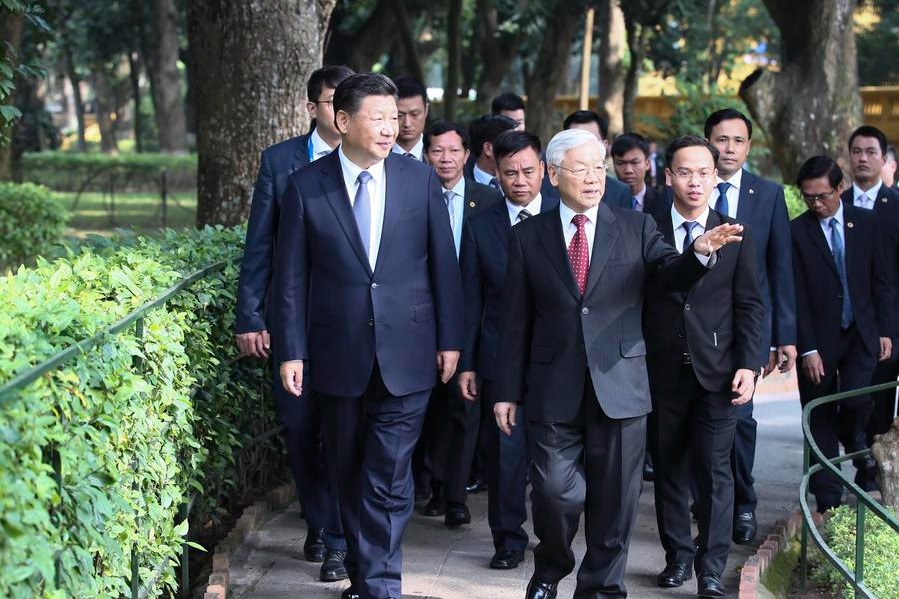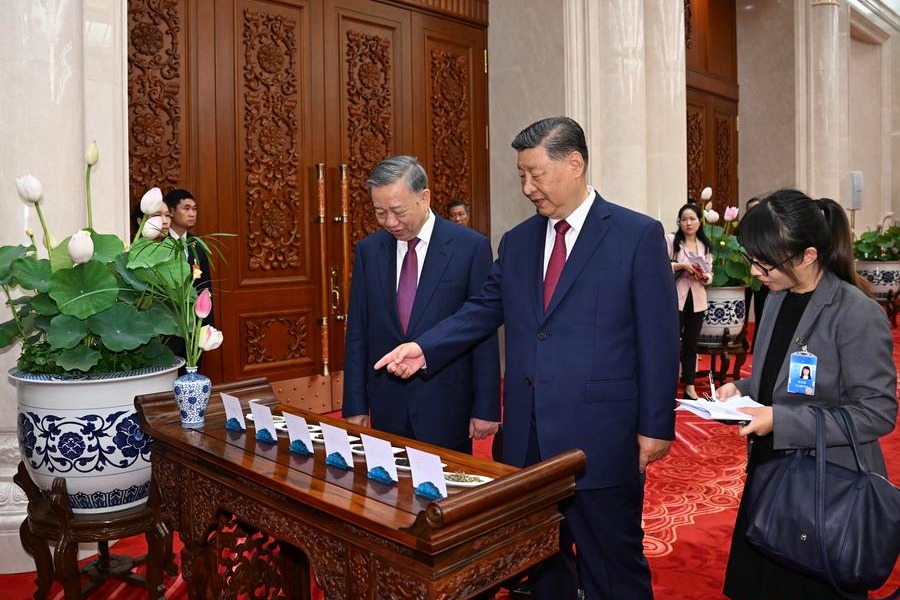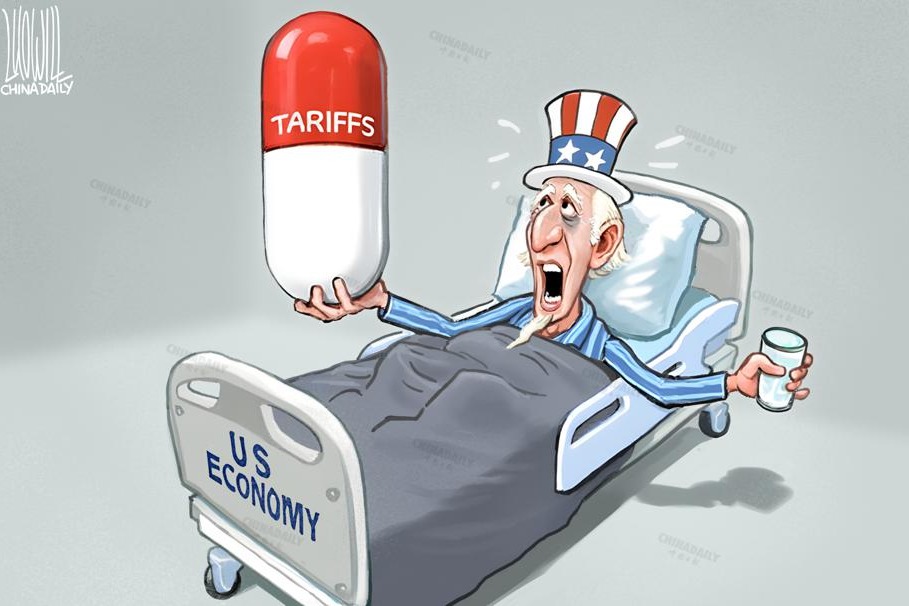Greater Bay Area a center of innovation


On July 1, 2017, President Xi Jinping expounded in Hong Kong a vision for the Guangdong-Hong Kong-Macao Greater Bay Area to be a global center of international scientific and technological innovation.
As the world has other bay areas with longer and successful histories, the Greater Bay Area should reflect on the lessons to be learned from the existing bay areas. From these it can be seen that there are at least two areas of fundamental importance: The first is what role will research universities play in the Greater Bay Area. The second is how to fund enterprises in the region, especially those in their beginning and growing phases.
Universities produce outstanding research
First, research universities are known to be the source of outstanding research results. They also supply talents to propel the scientific and technological strengths of a region. One hears often that for a region's betterment, research universities should collaborate. But it should be recognized that there are two forms of collaboration: those which are top-down, university-to-university, and those which are bottom-up, people-to-people.
For the top-down university-to-university collaborations, the norm should be to strive for win-win outcomes. Unfortunately, due to intense inter-university competition in many areas-for talented faculty, students and funding-collaborations are often difficult, if not impossible.
For example, there are two world-class universities in and around the Silicon Valley: Stanford University and the University of California Berkeley. Stanford is a self-contained private university and Berkeley is one of the 10 campuses of the University of California. For Berkeley, its intellectual properties belong to the University of California, while Stanford's are its own.
Although these structural complexities do not render collaboration between these two universities impossible, generally they make the process complicated and convoluted. This is an important lesson for the Greater Bay Area universities to heed, namely forcing top-down collaboration among universities may have undesirable results.
Creating win-win collaborations
We do not want to create the impression that top-down collaborations are impossible. For example, Massachusetts Institute of Technology and Harvard University, which are physically near each other in Cambridge, Massachusetts, have found a way to collaborate seamlessly. For example, Harvard and MIT which have an outstanding medical school and engineering school, respectively, have initiated a biomedical and genomic Broad Institute. This nonprofit institute which benefits the entire Boston area has MIT, Harvard and five Harvard teaching hospitals as partners. With this as an example, universities in the Greater Bay Area should also explore with great care non-competitive areas to create win-win collaborations.
As for people-to-people collaborations, it is interesting that even the most casual observer would notice that the Silicon Valley is dotted with casual establishments, such as coffee shops. At these venues, people can engage in casual or serious discussions, even prior to knowing each another. Often, these are venues where beginning and mature entrepreneurs can meet. Such casual meetings can be the genesis of the idea of initiating a company.
Second, as the old saying goes, "vision without funding is simply hallucination". For the region to flourish, it must be endowed with a healthy system to fund science and technology startups and growing enterprises. Academic institutions in and around Boston and the Silicon Valley have some of the best research faculty members and are producing the best and brightest young minds. It is important that the region absorbing such talents must be entrepreneurially alluring for them to be successful.
Two sources of funding
There are two known sources of funding: the government and private sources. Much of the latter is known as venture funding. We believe that for the Greater Bay Area, we should take the US example to heart.
Around 1980, the US Congress established the ground-breaking Bayh-Dole Act. This Act essentially allows all intellectual properties arising from federally funded research be returned to the universities and corporations. It fundamentally altered the technology-transfer landscape in universities. With tech-transfers, some faculty members began to leverage their intellectual properties to engage in entrepreneurial activities.
With this new paradigm, nearly all funding agencies in the country, such as the National Science Foundation, Department of Economics and National Institute of Health, and even the military outfits began adding onto their funding systems a component known as Small Business Innovation Research. Small Business Innovation Research is de facto government venture funds.
From little acorns grow mighty oaks
Although government funds play an important role, because they are heavily bureaucratic by nature and generally the managers are risk adverse and have little to gain from any success, it tends to be a time-consuming process for the entrepreneurs to receive funds. For businesses which need quick actions to be successful, the impact of government funding has only limited effect. We believe this is also an important lesson for the Greater Bay Area.
We will illustrate the importance of rapid funding with an example. In 2012, four Stanford graduates, Andy Fang, Stanley Tang, Tony Xu and Evan Moore, initiated a rapid food delivery company. They came up with the idea when some of them were taking a course at Stanford, and their assignment was to design a business. Their company, now named DoorDash, has more than 800 employees, is already valued at $600 million according to CB Insights, and is potentially worth $1 billion or more down the road.
Over the company's seven years of growth, what has been absolutely irreplaceable is the robust, aggressive and omnipresent venture capital culture which permeates Silicon Valley.
The key investors when DoorDash was founded in 2013, were Khosla Venture and Wellcome Trust. As DoorDash grew rapidly, in 2015, two other powerful venture funds, Kleiner Perkins Caufield& Byers and Y Combinator (a seed accelerator) came onboard. Finally, with further growth, Sequoia Capital (which has backed companies that now control $1.4 trillion of the combined stock market value) joined the funding. In fact, both Kleiner et al and Sequoia now occupy a seat each on the board, sharing risks as well as profits.
We should emphasize that DoorDash is but one of the many success stories of such enterprises in the Silicon Valley. It is worth noting that the venture funds are managed by individuals who are intellectually attracted to and have the skills for creating and operating businesses. The venture capitalists have the confidence of investors worldwide.
Furthermore, they have self-interest in the businesses they are funding, which is unlike the Small Business Innovation Research funds or other forms of government funding. Finally, venture funding of enterprises tends to be quick and efficient. In a sense, they are the ways for the global community ground-swell interest, and who have the means to build a vibrant region.
GBA as a center of scientific innovation
For the Greater Bay Area to be transformative, these are indeed important and fundamental issues the leaders must confront and nurture. It is our firm belief that the successful establishment of the Greater Bay Area as a center of scientific and technological innovation can and will revitalize and promote economic development, industrial transformation and social progress in the region in particular, but also the nation and maybe the world in general.
Still, we would be remiss if we were to minimize the enormous difficulties and challenges, most of which cannot be mitigated in the short term. Yet with fortitude we look forward to the day when the Greater Bay Area emerges as a shining example of an internationally known leading scientific and technological innovation center for China and humanity.
Feng Da-Hsuan is chief adviser, China Silk Road iValley Research Institute, and former vice-president of the University of Texas at Dallas, and Liang Haiming is chairman of China's Silk Road iValley Research Institute and visiting scholar, Princeton University.
































